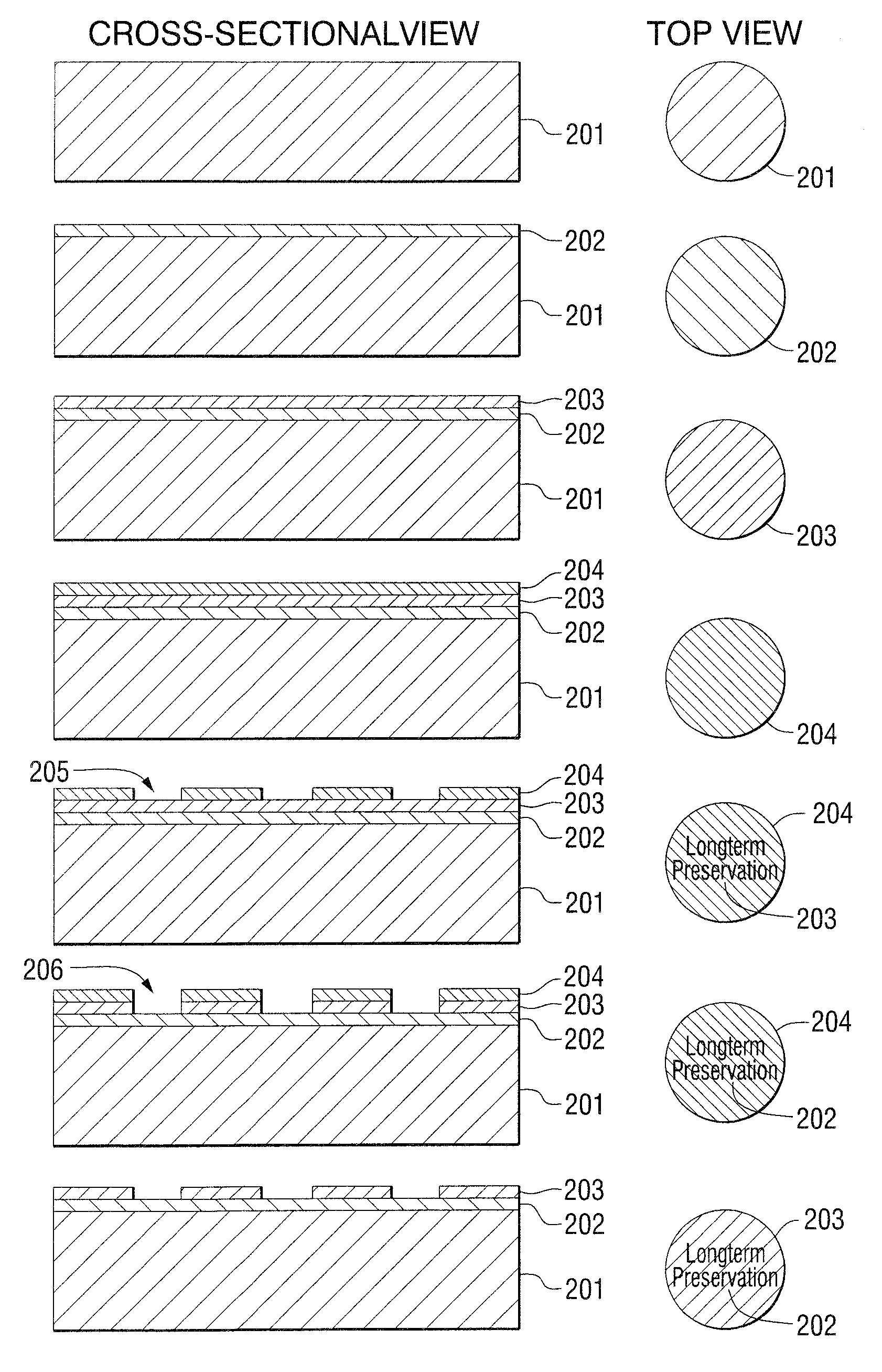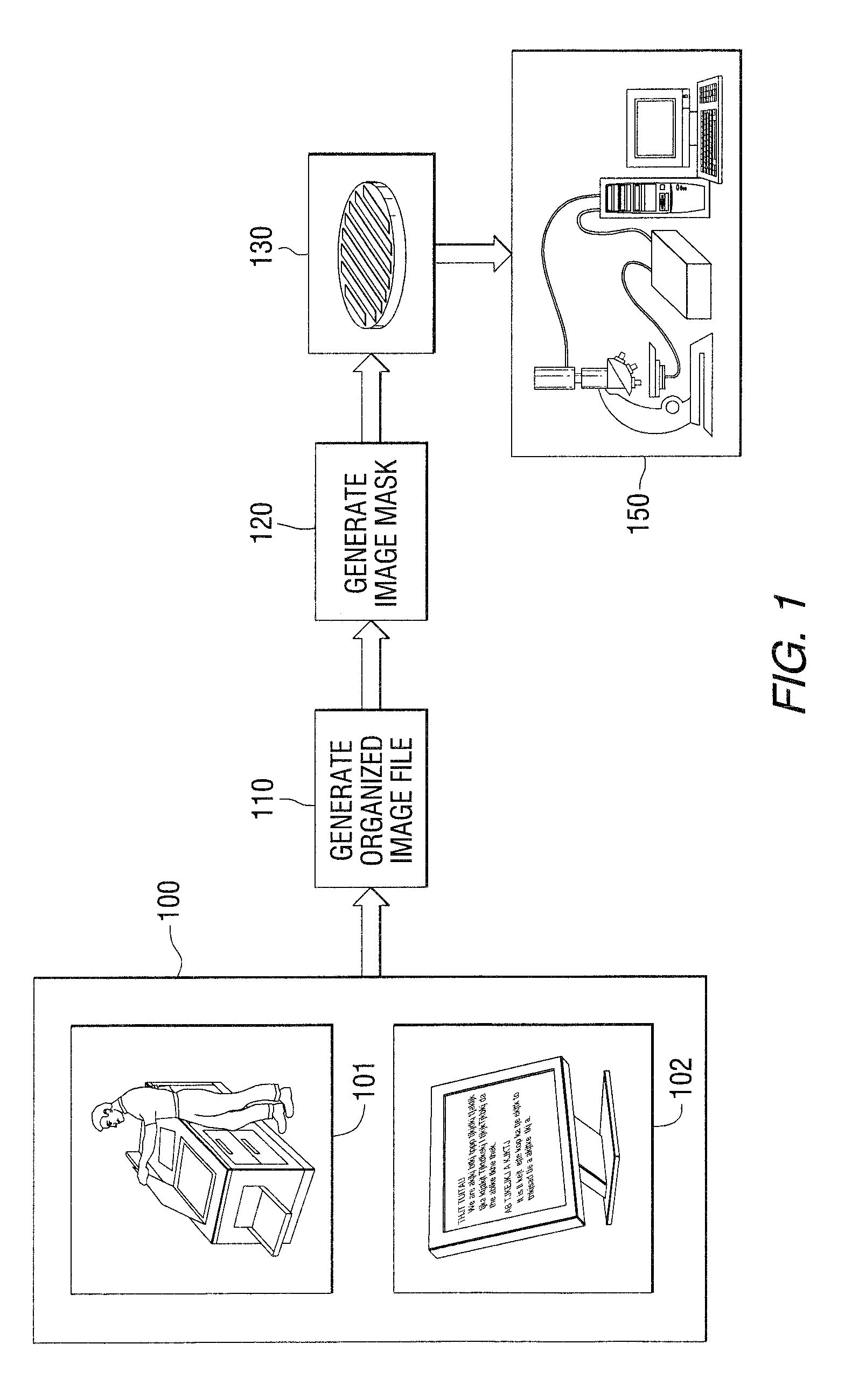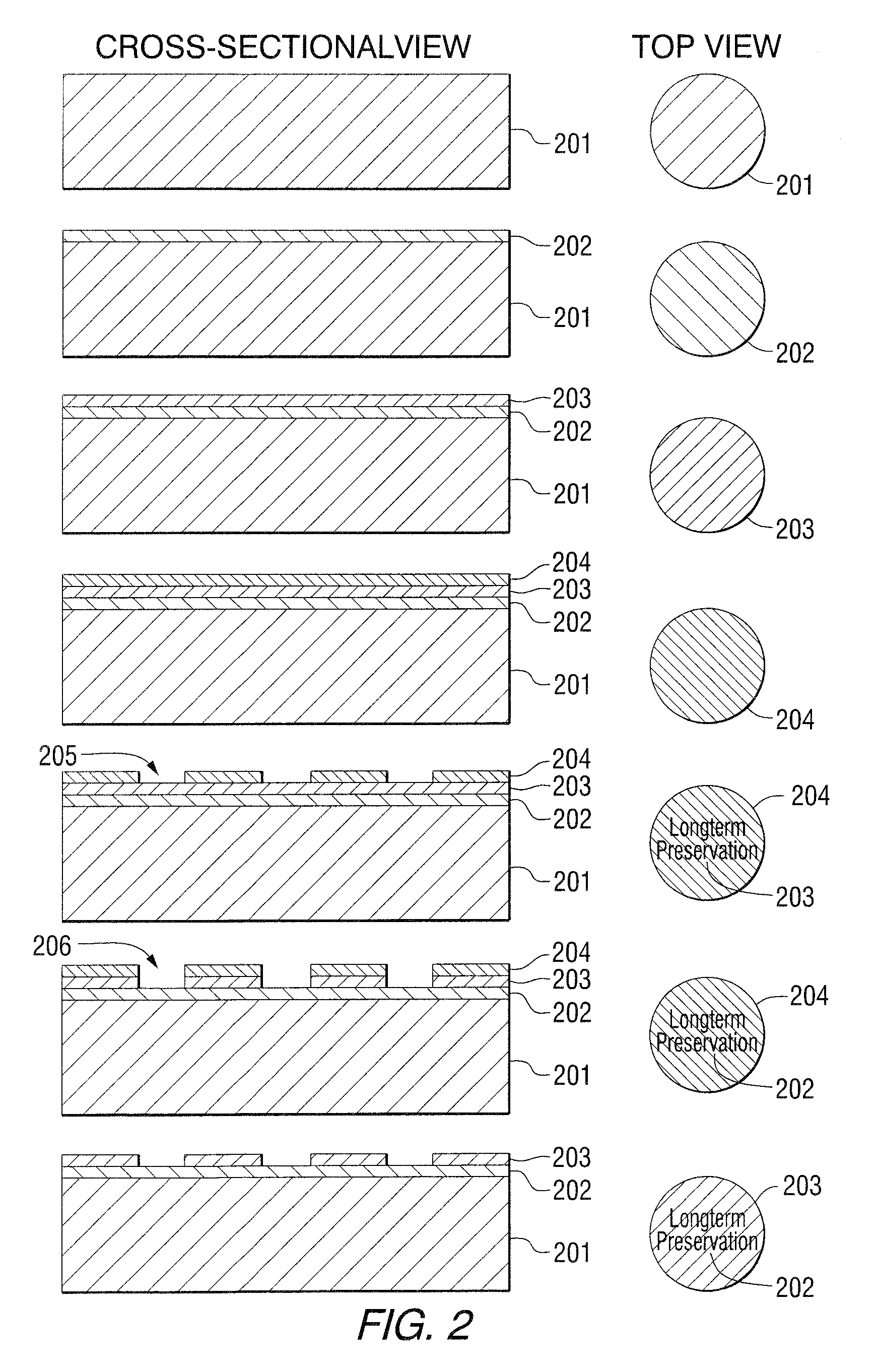Wafer-scale image archiving and receiving system
- Summary
- Abstract
- Description
- Claims
- Application Information
AI Technical Summary
Benefits of technology
Problems solved by technology
Method used
Image
Examples
Embodiment Construction
[0021]This invention relates to storing data as images on semiconductor substrates, particularly for long-term preservation using imaging and semiconductor fabrication techniques. In this technique, data are stored in such a way that it is visible to the human eye usually with magnification, though it is possible to view large-scale images without magnification. The data from printed documents, digital files, or any other media are converted to images. These images, with the help of photolithography tools and fabrication techniques, are then imprinted and etched on semiconductor substrates, such as silicon wafers. The use of silicon makes the information resistant to both high temperatures up to 400° C. and water exposure ensuring longevity, which is very useful in preserving documents. Since the stored data are not processed or digitized before storing, the data can be stored for long periods without degrading over time. One advantage of this technique is retrieval of the data can ...
PUM
 Login to View More
Login to View More Abstract
Description
Claims
Application Information
 Login to View More
Login to View More - R&D
- Intellectual Property
- Life Sciences
- Materials
- Tech Scout
- Unparalleled Data Quality
- Higher Quality Content
- 60% Fewer Hallucinations
Browse by: Latest US Patents, China's latest patents, Technical Efficacy Thesaurus, Application Domain, Technology Topic, Popular Technical Reports.
© 2025 PatSnap. All rights reserved.Legal|Privacy policy|Modern Slavery Act Transparency Statement|Sitemap|About US| Contact US: help@patsnap.com



